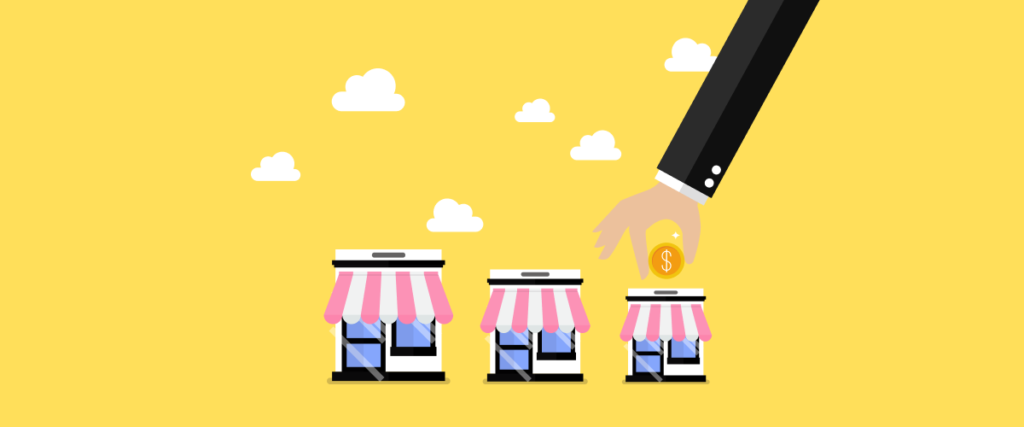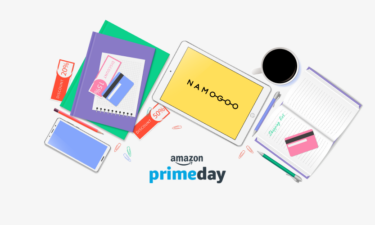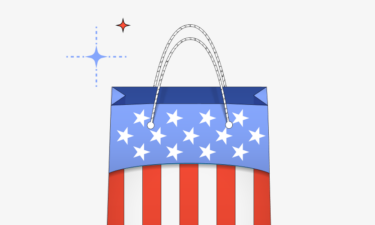Singles’ Day is already behind us, but the bulk of the holiday season is just around the corner. Small Business Saturday, also known as SBS, serves as a perfect buffer between Black Friday and Cyber Monday, encouraging American and British consumers to support small retailers and local businesses.
It’s no secret that US-based shoppers love deals and discounts, especially during the holiday season. Another known fact is that consumers tend to have a soft spot for small and local businesses. As you’ll learn later in this article, creating a sense of urgency, establishing a personal connection with the consumer, and streamlining the logistics can prove to be a very potent formula.
Related: Retail Supply Chain Logjams: Preparing for the 2021 Holiday Season and Beyond
Small Business Saturday: A Blooming American Tradition
A Black Friday add-on of sorts, Small Business Saturday has been observed as a national holiday in the United States since 2010. The motivation behind Small Business Saturday is giving local businesses and small retailers the opportunity to get added exposure during the holiday season.
Initially powered by American Express, Small Business Saturday is different from Black Friday and Cyber Monday, which mainly revolve around big box retailers and top eCommerce giants. SBS showcases small businesses, brick and mortar stores, and low-scale retailers, giving Americans a chance to create more jobs locally and support the economic food chain in their neighborhoods or towns.
#ShopSmall is no longer just a catchy hashtag. The Senate officially recognized Small Business Saturday in 2011 and even the US President always makes time to mention this unique shopping holiday that is now engraved in American culture.
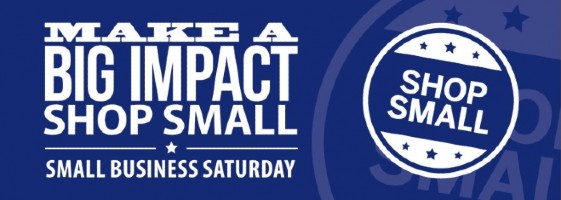
#ShopSmall Campaigns Are Everywhere this Year
American Express is still in the thick of things. Besides investing over $200 million in Small Business Saturday initiatives in 2020 alone, it’s now offering a starter pack for small shops and chains looking to join the action on Small Business Saturday. While this will probably not be enough to propel your business to the top, it can still serve as a good launching pad for the upcoming holiday season.
It’s also heating up across the pond. Small Business Saturday UK has become a major eCommerce event in recent years. The American trend was adopted in 2013, and there has been no looking back. As per market estimates, British consumers spent over £717 million in the 2016 event alone, with numbers approaching the £750 million mark a year later.
UK-based businesses interested in joining the festivities need to apply on the Small Biz 100 Website, which is supported by financial bodies like the Northern Ireland Independent Retail Trade Association and the Federation of Small Businesses.
Top 8 Strategies Small Businesses Need to Adopt Today
Small Business Saturday is going to be important on many levels. Profit margins are shrinking due to increased competition and retail supply chain issues caused by the COVID-19 pandemic. A strong holiday season can ignite financial success and also trigger additional growth in 2022. But achieving this will require an educated and proactive approach to get things done properly.
Here are some crucial steps that small businesses need to take today:
1. Invest in User Experience and Site Performance
The modern consumer expects a smooth shopping experience, especially when it comes to mobile and tablet. In fact, almost 80% of shoppers have made a purchase via their mobile phone in 2021. Slow load times, cumbersome interfaces, and alignment issues can lead to accelerated churn and increased shopping cart abandonment. Improving performance metrics is now more crucial than ever.
Take a look at the Graze website, known as one of the most user-friendly ones out there thanks to the unique font usage, easy navigation, rich color palette, strong CTAs, and fast load times. User experience has to be taken seriously today.
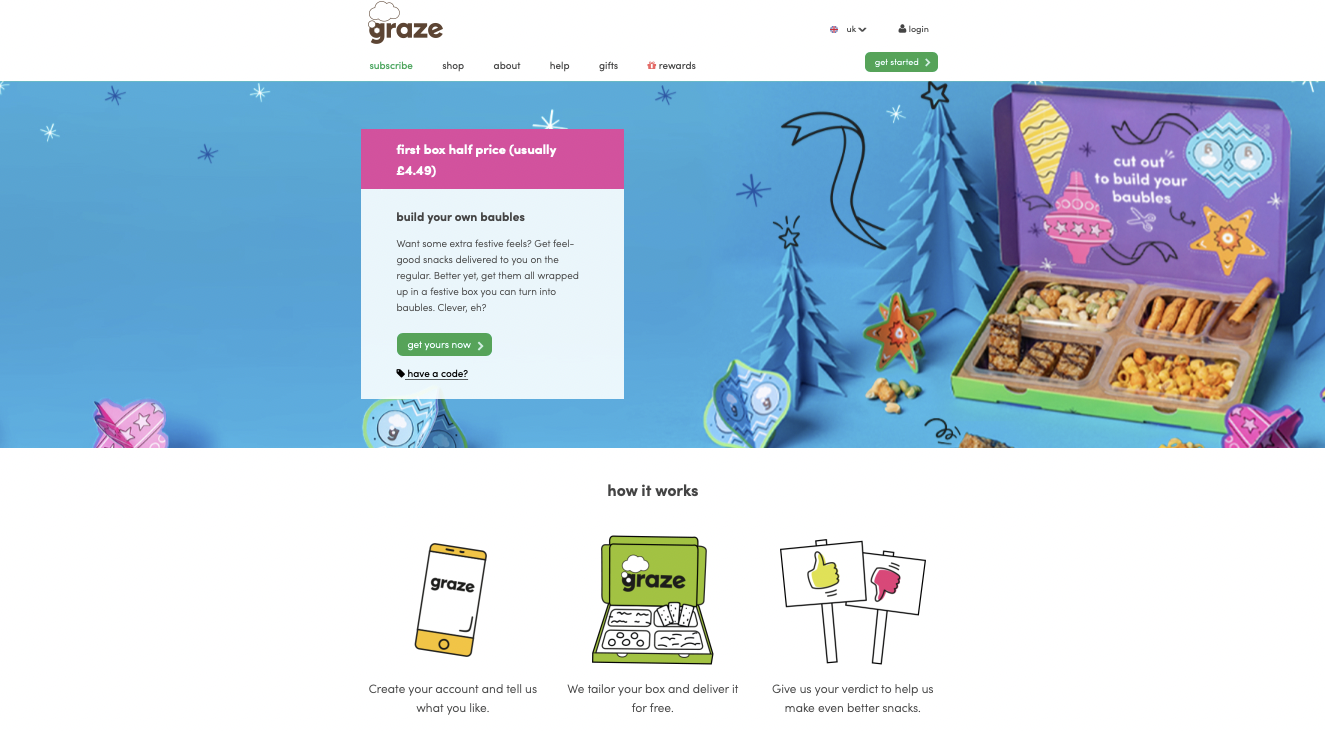
The Graze website is a true source of inspiration for small businesses. Courtesy: Graze
2. Embrace Social Causes
Big retailers often choose not to take controversial social stands due to their diversified customer portfolio and brand performance considerations, especially after going public. But small businesses can use this to their advantage to increase visibility. Improving customer retention in the holiday season is all about creating a unique brand identity and showing more social responsibility.
Recent research by Kantar has fortified this fact. Almost 70% of consumers now expect brands to be clear about their stand on today’s burning social issues. The number goes up significantly with the African-American community (82%). For example, fashion business The Elephant Pants (as seen on the Shark Tank show) pays it’s Thai employees double the minimum wage.
3. Run Personalized and Targeted Promotions
Shoppers like promotions and discounts, but they also like them served instantly with minimal delays. The same principle applies to products that have been purchased before. What if you could use a tool to break down these online activities and tendencies to trigger more conversions? The good news is that you can do just that by pushing the most relevant products to the forefront based on intent.
Besides being effective in boosting conversions and creating more sales, personalizing promotions also create a sense of urgency, also known as FOMO. This tech can now be integrated with leading eCommerce platforms like Shopify.
4. Invest in Email Marketing and SMS Messaging
Well-crafted outbound marketing that brings value can lure in new shoppers and also allow businesses to bring back old customers. Special promotions and discounts are great eCommerce tools, but you need to make sure your target audience is learning about them on time via the channels they use most often. This is where emails and SMS messaging come into play.
A recent Namogoo survey showed that 51% of shoppers are now learning about new promotions via email. SMS marketing came in third at almost 10%, a number that is expected to rise in 2022 due to the higher open rates, lower implementation costs, and real-time engagement this channel offers. A cross-channel messaging solution can be the best option for your needs.
5. Ramp Up Social Media Activity
As a small business, you need to nourish your social media platforms to create, maintain, and grow brand awareness. You can also run promotions and give people a reason to keep coming back. On top of that, your activity should be supplemented with well-crafted paid campaigns and ads. Just look at The Farmer’s Dog, a boutique pet food business which has now become a flourishing online company.
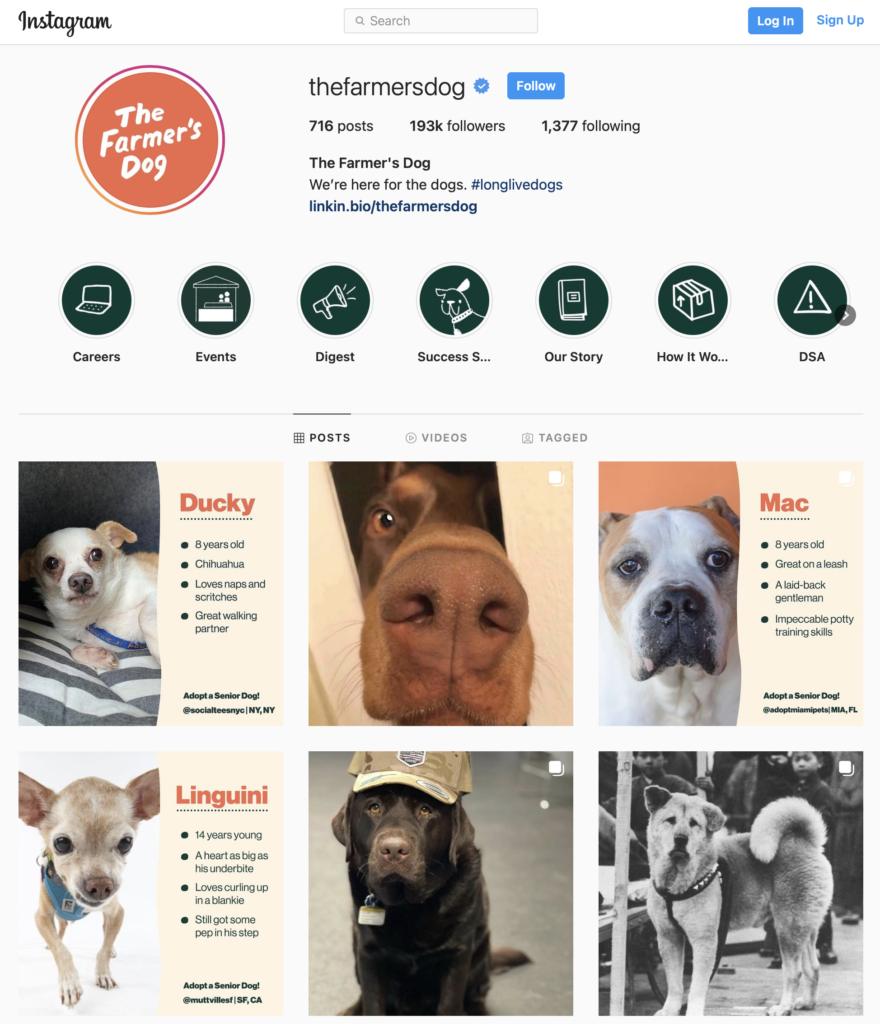
The Farmer’s Dog: Almost 200k Instagram Followers with Just Around 700 Posts.
The numbers don’t lie. Over 50% of small businesses are noticing significant visitor spikes after using paid search advertising. The platform also needs to be chosen as per the target audience. For example, young people prefer Instagram, with women accounting for 57% of the users. But when we look at Twitter, this number goes down to just 32%. Picking the right platform to invest in is key.
Related: Social Commerce: When Social Media Meets eCommerce
Here are a some useful hashtags for your Small Business Saturday social media posts and online campaigns: #ShopSmall, #ShopSmallBusiness, #ShopLocal, #SmallBusiness, #SmallBusinessSaturday, and #SmallBizSat.
6. Create a Foolproof SEO Strategy
There’s no two ways about it. You need to show up more in Google searches. Since SMBs can’t invest huge amounts of money in paid campaigns, Search Engine Optimization (SEO) is the answer. A solid content strategy, targeting the right keywords, and constant optimization of the website to remove “unfriendly plugins and add-ons” can boost your inbound traffic metrics significantly.
If you don’t have the budget to hire an in-house content champion with a strong SEO background, you can work with a marketing agency or look for experienced experts on Upwork or Freelancer.com. After all, content is king!
7. Lead a Community-Centric Strategy
Once you have a loyal customer base that is frequenting your social media pages (or your blog), you can start engaging with them. Small businesses have the luxury of engaging with specific audiences and building a loyal customer base that grows organically. Make sure you are showcasing humanizing elements of your business like employee well-being, non-profit initiatives, and more.
Giveaways are a great tool to grow your brand and can get you a lot of attention, but keep in mind that most people will probably be in it just for the freebies. It may be a better idea to offer products from your inventory to enhance brand recognition and find ways to engage with your shoppers to create a community. PetConnect did just that.
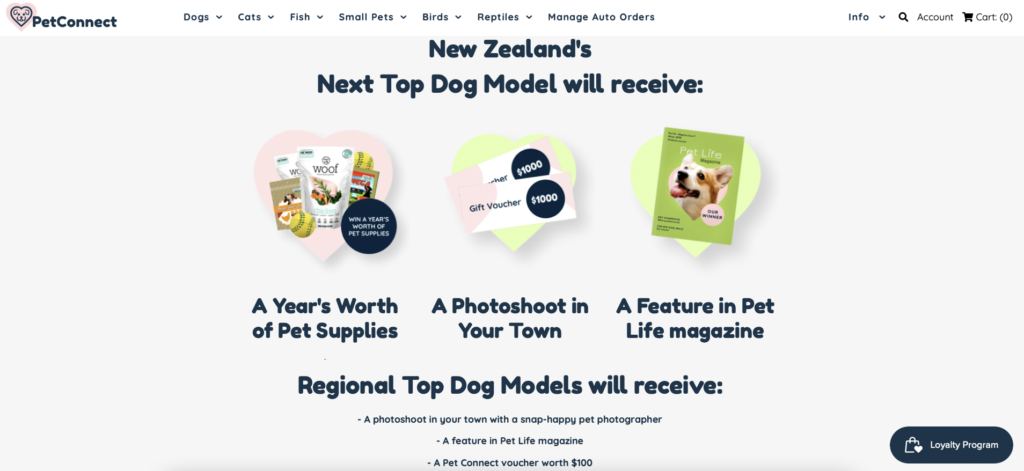
PetConnect: A Successful Campaign with a Very Practical Prize.
8. Run Retention and Loyalty Programs
Having a great Small Business Saturday isn’t enough. It’s important to make sure that your customers are coming back for more in 2022 and beyond. The best way to get this done is by carefully planning and executing loyalty programs. Not only that, as shown in a recent Accenture research study, customer loyalty program members spend around 15% more than one-time shoppers.
There are also many ways to implement loyalty programs. You can opt for the classic point driven loyalty program or offer tier-based ones, where paid members enjoy exclusive benefits. There are also other variations like subscription and review reward programs. After scaling up a bit, you can also offer shoppers scannable membership cards or gifts for special occasions like birthdays.
If You Can’t Beat Em’, Join Em’
As helpful as these best practices and hacks are, it’s extremely hard for small businesses to challenge mega-platforms like Amazon, eBay, and Etsy. So it only makes sense to get on them to improve your visibility and performance metrics. With over 300 million shoppers currently frequenting the various Amazon platforms, becoming an Amazon Seller makes a lot of sense.
The data shows that this strategy is paying off, with more and more SMBs investing time and resources in their Amazon efforts. In 2020 alone, over 55% of independent sellers reported an increase in their sales. Also, small businesses crossing the coveted $1 million sales mark grew by over 30%. Consider checking out the Amazon Launchpad program and the innovation grants on offer.
If you want to try out other platforms, check out the seller options that eBay and Etsy are currently offering. These strategies can be used as a springboard to catapult your budding business into the eCommerce stratosphere.
Adopting a proactive approach and leveraging the power of large eCommerce platforms like Amazon can help you achieve sustainable success as a growing business. Implementing the strategies mentioned above will allow you to establish a genuine connection with your customers, while also converting them into advocates for your brand. Small Business Saturday is a great time to get started.



